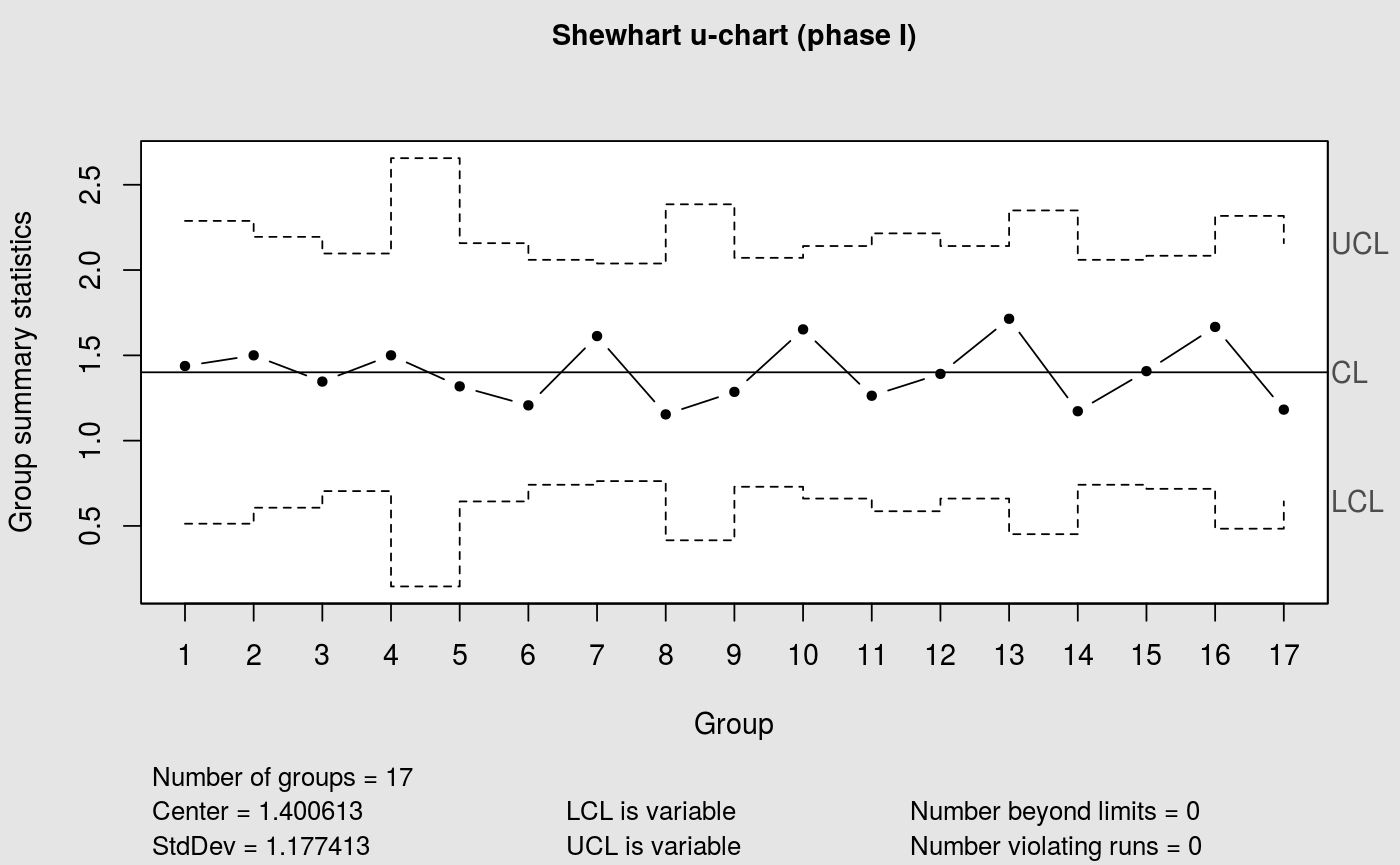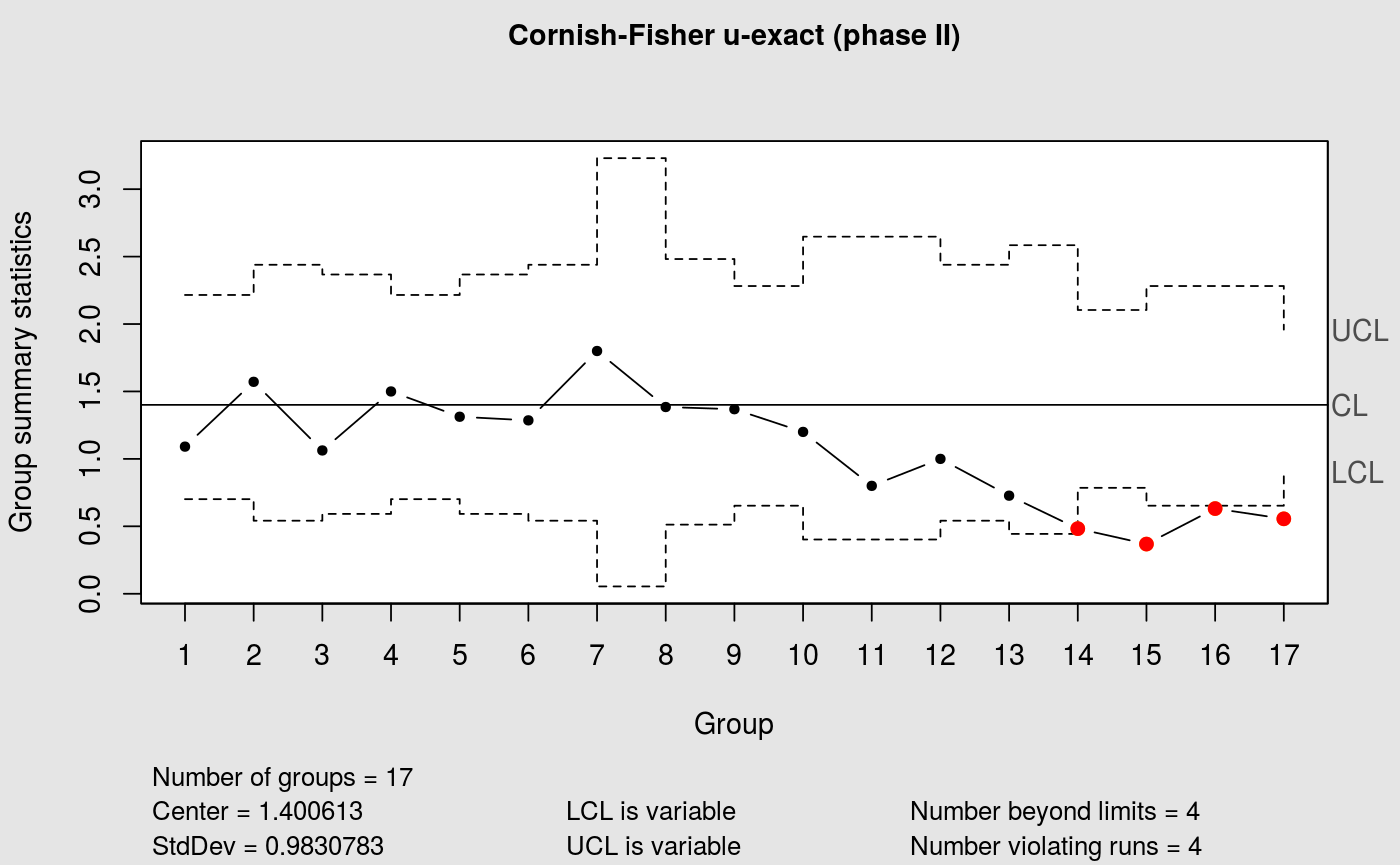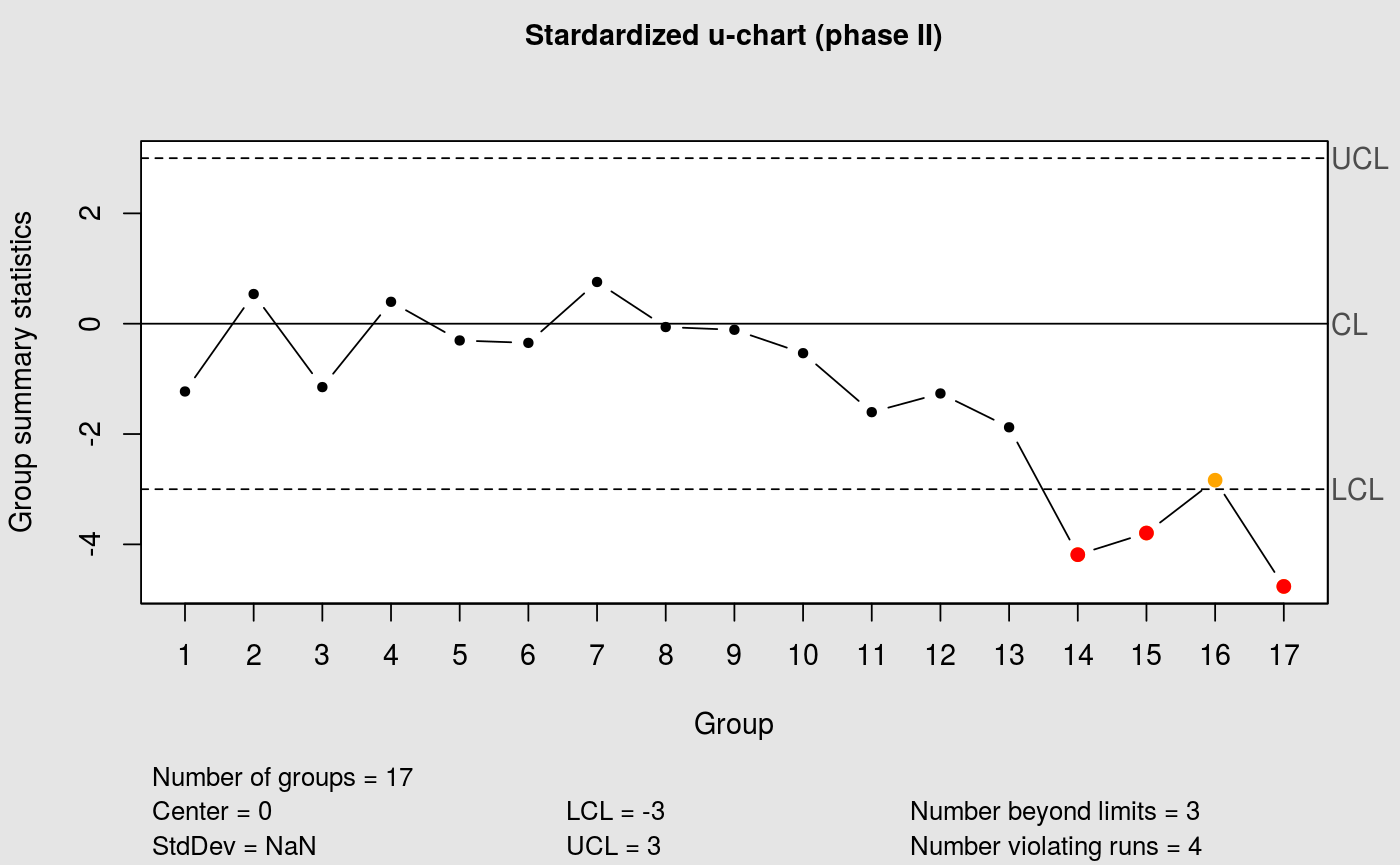u-chart
This function builds a u-chart for the Poisson-based count data statistic.
cchart.u(x1 = NULL, n1 = NULL, type = "norm", u1 = NULL, x2 = NULL, n2 = NULL, lambda = NULL, u2 = NULL)
Arguments
| x1 | The phase I data that will be plotted (if it is a phase I chart). |
|---|---|
| n1 | A value or a vector of values specifying the sample sizes associated with each group for the phase I data. |
| type | The type of u-chart to be plotted. The options are "norm" (traditional Shewhart u-chart), "CF" (improved u-chart) and "std" (standardized u-chart). If not specified, a Shewhart u-chart will be plotted. |
| u1 | The sample ratios used to estimate the Poisson parameter (lambda). (x1 / n1). |
| x2 | The phase II data that will be plotted in a phase II chart. |
| n2 | A value or a vector of values specifying the sample sizes associated with each group for the phase II data. |
| lambda | The estimate of lambda. |
| u2 | The sample ratios of the phase II data (x2 / n2). |
Value
Returns a u-chart.
Details
For a phase I u-chart, n1 must be specified and either x1 or u1. For a phase II u-chart, n2 must be specified, plus x2 or u2 and either phat, x1 and n1, or u1 and n1. It is important to note that the normal approximation used in the Shewhart u-chart is valid only for n*u large. For small n*p , it should be used an "improved u chart" (with non-normal correction) given by using the argument "CF".
Examples
data(moonroof) attach(moonroof)#> #> #>cchart.u(x1 = yi[1:17], n1 = ni[1:17])cchart.u(x1 = yi[1:17], n1 = ni[1:17], type = "CF", x2 = yi[18:34], n2 = ni[18:34])cchart.u(type = "std", u2 = ui[18:34], n2 = ni[18:34], lambda = 1.4)#> Warning: NaNs produzidos#> List of 11 #> $ call : language qcc(data = std, type = "u", sizes = n2, center = 0, limits = c(-3, 3), title = "Stardardized u-chart (phase II)") #> $ type : chr "u" #> $ data.name : chr "std" #> $ data : num [1:17, 1] -27.04 7.53 -18.39 8.72 -4.87 ... #> ..- attr(*, "dimnames")=List of 2 #> $ statistics: Named num [1:17] -1.229 0.538 -1.149 0.396 -0.304 ... #> ..- attr(*, "names")= chr [1:17] "1" "2" "3" "4" ... #> $ sizes : int [1:17] 22 14 16 22 16 14 5 13 19 10 ... #> $ center : num 0 #> $ std.dev : num NaN #> $ nsigmas : num 3 #> $ limits : num [1, 1:2] -3 3 #> ..- attr(*, "dimnames")=List of 2 #> $ violations:List of 2 #> - attr(*, "class")= chr "qcc"


